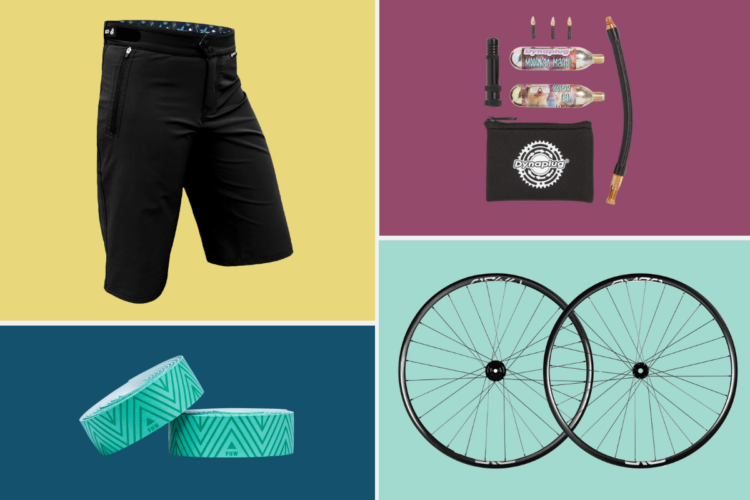At some point we all need to transport our bikes to the trailhead, bike shop, etc. While most cars can handle one bike stowed inside, it’s a pain getting it in and out, and if you want to carpool withfriends it can be difficult to fit them all.
The solution is a quality bike rack, and there are three basic types: trunk mount, hitch mount, and roof mount.
Trunk mount carriers are the least expensive solution and can be quickly removed from the vehicle when not in use. Because these racks mount using only straps and buckles, they are not the most secure solution. They do very little, if anything, to prevent theft, and damage to your car or bike is likely. These should be considered a temporary solution, and if you consider yourself a serious mountain biker you should look into a more permanent option. These racks will run from $50 to $250.

photo credit 1upUSA.com
Hitch mount carriers, as the name implies, attach to the receiver hitch on your car. If you car already has a hitch, this is a great way to go. If your car doesn’t, you’ll need to factor in the cost of a hitch as well as the rack. Hitch mount racks come in two versions: ones that hold the bikes by the frame, or ones where the wheels sit in a tray. The former are usually less expensive, but are limited on what frame shapes they can fit.
The tray mount variety can hold literally any bike, and tend to be more stable and secure. Most hitch mount racks can swing down or away from the vehicle to allow access to the trunk or hatchback. One issue with hitch mounts is that they can drag or scrape when driving through a dip such as when entering a parking lot. Another is that even the best hitch mounts have a little bit of ‘bounce’ which jostles your bike when you hit bumps. This is mitigated when the bike is held by the wheels. Expect to pay between $200 and $500 for this type of rack.

Roof mount racks, obviously, go on the roof of your car. The two major rack vendors are Thule and Yakima–both make systems for a wide variety of car models. Both vendors also make the bike trays as well, or you can choose a tray from Rocky Mounts that will fit on eithermanufacturer’s’ bars. Roof racks are my preferred setup, and they tend to be stable and secure. If your car already has factory rails, setting up the rack system is a cinch. Even cars without rails can usually be made to work, and some sedans such as Volvo havededicatedmounting plates specifically for Thule rack systems.
While roof racks are easy to use and are very stable while driving, they also present a couple of issues. When transporting your bikes, you will take a fuel efficiency penalty; however when the racks are empty they shouldn’t make too much of a difference. Another potentially disastrous problem is driving your bikes into a drive-thru overhang or into your garage. At a minimum you will damage your fork, and possibly your rack, car roof, and the structure you hit. It’s not pretty. Expect to pay as much as $600 or more for a complete setup that can haul a pair of bikes.
If you have a Jeep or SUV with a rear-mounted spare tire, there is also a bike rack that can attach directly to the tire mount hardware. It looks like the trunk mount, but is much more secure and can be locked. This type also swings with the tailgate, allowing access to the back of the vehicle.
Whatever rack system you decide to go with, do a little research online and see what other owners of your type of car have had success with. Also factor in how frequently you actually need to transport bikes, and how many. If you really only need to transport a bike occasionally, a trunk mount might be okay. If you routinelytransporttwo or more bikes, and do so for long distances, you owe it to your bikes and your car to get a dedicated hitch or roof mount system.

















